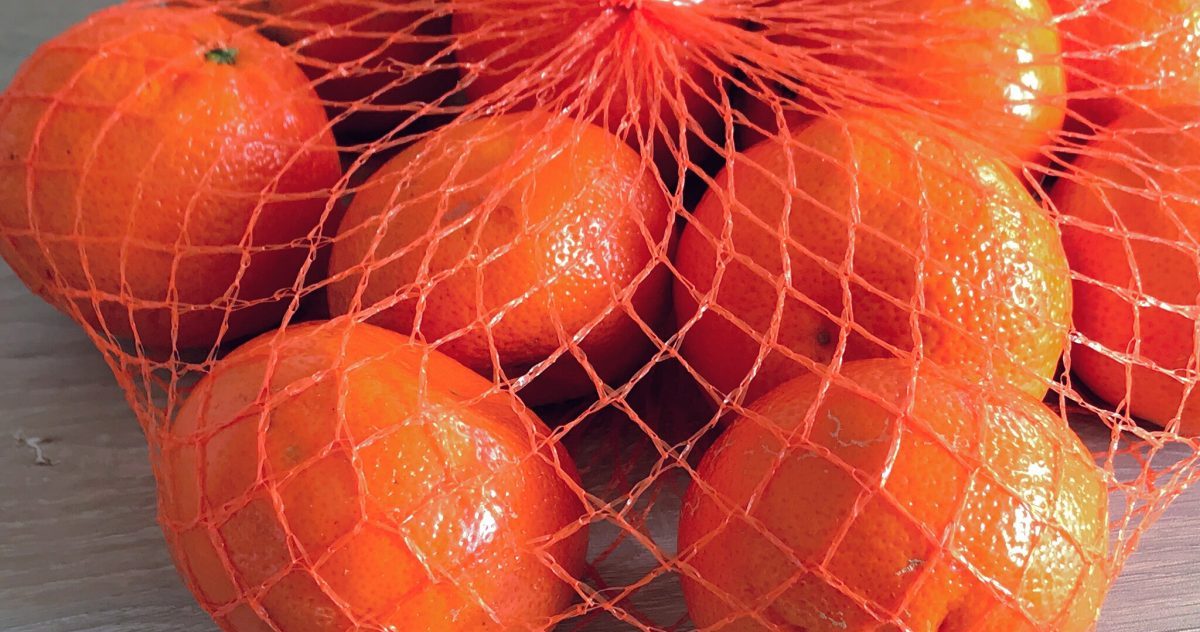
Have you ever wondered why oranges come in those red mesh bags?
Well, the answer might surprise you.
It actually has nothing to do with safety in transportation or freshness of the product, but is more about the visual and tricking a potential buyer’s senses.
A red or orange plastic net gives the impression that the orange peel is a richer orange color, as they emphasize the existing orange.
A more orange orange implies a sweeter and juicier orange as well, making it more appealing to consumers.
Similarly, if the fruit is unripe, the colored net will help “hide” any remaining green-ness on the fruit.
The principle is based on the “confetti illusion”, a visual phenomenon where the perception of colors is strongly influenced by its surrounding context.
Based on the “Munker Illusion”, the illusion was studied by David Novick and Akiyoshi Kitaoka, researchers at The University of Texas at El Paso and Ritsumeikan University, Ibaraki, Osaka, Japan, respectively.
In this optical illusion, a neutrally colored ball is placed within a grid of differently colored lines. When the lines of a particular color are in the foreground, the ball’s color appears to blend with that of the lines.
The illusion works because “our acuity for shape is better than our acuity for color, which means that we perceive the shapes with more detail and the colors with less detail,” Novick said. “The color sort of bleeds over, or assimilates, to adjacent spaces.”
So how does that relate back to our red-bagged oranges?
Psychologist Karl R. Gegenfurtner from Giessen University in Germany details how the supermarket’s orange bag utilizes the confetti illusion in a new study, writing “I buy juice oranges from my favorite fruit seller Helga every Saturday at the local market. On a recent day, she did not have any nice ripe oranges, as could be expected during the German summer. Later, stopping by in a supermarket, there seemed to be an abundance of ripe oranges, and of course, I bought a bunch of them, handily packaged into an orange net for carrying.”
“At home, when I took out the oranges from the net, a miracle happened: each orange, beautifully colored within the net, turned into an abysmal shade of green!” Gegenfurtner continues.
Gegenfurtner photographed his purchase to help verify his findings.
“We conclude that color assimilation alone provides a strong effect on color appearance, turning the greenish looking orange into a beautifully orange one. Needless to say that fruit vendors have realized this a long time ago. Looking around in typical supermarkets, it is easy to see that fruits and vegetables (e.g., lemons, onions, zucchini, or even potatoes) are typically packaged in nets that are of the color of perfect exemplars,” the study says.
Basically, our brains are programmed to process peripheral vision and color perception, aiming to provide us with the most easy to understand experience.
Meanwhile, our visual system is wired to perceive uniformity and smooth transitions. So, when the red netting is placed over an orange, our brains merge adjacent colors to simplify what we see.
Does it translate to more sales?
That has yet to be studied, but should probably be next on the list!
If you think that’s impressive, check out this story about a “goldmine” of lithium that was found in the U.S. that could completely change the EV battery game.